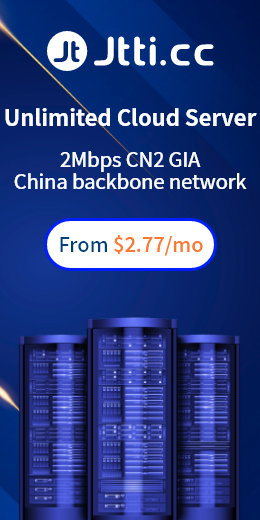In the current global Internet environment, the competition among various industries is fierce, and the operation of the site group is a key means for enterprises to expand new markets and optimize search engines. The effective use of site cluster servers not only depends on content marketing strategies and SEO skills, but also depends on the stability of the underlying infrastructure of the server. Therefore, enterprises choose multi-C-segment station cluster servers, multi-IP station cluster servers to meet the high concurrency needs to avoid the correlation penalty of search engines, but also need to resist network attacks. The following is about the enterprise from the geographical location, hardware configuration, network architecture, security protection, service provider qualifications and other dimensions to explain the station group server rental skills.
Strategic considerations for Geographic location The geographic location of a server directly affects access speed and user perception. However, if the business is for the European and American markets or needs large bandwidth support, the US server is more cost-effective - its default bandwidth usually starts at 100M, and can even be extended to 10G, and the defense capability is stronger, can provide 10G to 200G DDoS protection, suitable for high traffic and high security requirements scenarios. In addition, servers in South Korea, Singapore and other places have gradually become a compromise choice for small and medium-sized stations due to two-way CN2 lines and lower IP costs.
The cornerstone of hardware performance Stability begins with hardware configuration. Multi-c-segment cluster servers need to host dozens or even hundreds of websites at the same time, which puts higher requirements on CPU, memory and storage. High-performance multi-core processors (such as Intel Xeon series) can effectively process concurrent requests, and at least eight cores are recommended. The memory capacity needs to match the size of the website. If the average daily visits exceed 100,000, more than 16GB of memory can avoid frequent page swapping and performance bottlenecks. In terms of storage, the random read and write speed of high-speed SSDS is tens of times that of traditional HDDS, which can significantly improve database response and page loading efficiency. It is worth noting that some service providers use old hardware to reduce costs, and need to verify the CPU model, memory brand and hard disk type before renting to avoid hidden shrinkage.
Fine design of network architecture Network quality is the core index of stability. First of all, the bandwidth needs to match the size of the business: although the Hong Kong server has low latency, the international bandwidth is expensive (1M about hundreds of yuan), which is only suitable for lightweight station groups; American servers can provide 100 Mbit/s of exclusive bandwidth at a lower cost, which is suitable for resource-intensive sites such as pictures and videos. Secondly, multiple IP segments need to be allocated scientifically to avoid excessive concentration of the C segment. For example, choosing a 4C segment (244 IP), 8C segment (232 IP), or hybrid C-segment configuration can both spread SEO risk and optimize local search rankings through IP geographic distribution. In addition, an integrated CDN (Content Delivery Network) can further ease the pressure on source sites - caching static resources to edge nodes around the world, reducing transcontinental transmission latency, especially for multinational sites.
Secure, multi-tier build farm servers are often the target of hacker attacks, especially DDoS attacks and data breach risks. At the hardware level, select a equipment room with T-level protection capabilities. For example, a high-defense server in the United States can provide more than 200 GB of traffic cleaning capability, while a equipment room in Hong Kong usually has weak defense capabilities. At the software level, firewall rules should be enabled to restrict irregular port access, IP blacklist and whitelist should be set to block malicious crawlers, and site-wide data transmission should be encrypted through SSL/TLS. In addition, regular backups and quick recovery mechanisms are indispensable - some service providers offer daily automatic backups and snapshots that can be quickly rolled back to safety after a ransomware attack.
Service provider qualification and operation and maintenance guarantee Choosing regular service providers is the key to long-term stability. First of all, it is necessary to check whether the service provider has ISP qualifications and many years of operating experience, second, the after-sales service response speed is crucial: 7×24 hours operation and maintenance team can timely deal with hardware failures, network fluctuations and other issues, and the availability of more than 99.9% promised in SLA (service level Agreement) is the legal basis for stability. Finally, the purity of IP resources cannot be ignored - some cheap service providers provide addresses marked as "junk IP" by search engines, which may lead to the overall reduction of the station group. Before leasing, you can use a third-party tool to check IP address history in batches to ensure that there is no blacklist record.
Balancing costs and long-term operations Stability inputs need to be balanced with cost-effectiveness. The on-demand billing model is suitable for services with large traffic fluctuations. In addition, it is necessary to be alert to hidden charges: some service providers charge excess traffic by GB, or charge IP surcharges, and the billing details need to be clear before signing the contract. In long-term operation and maintenance, you are advised to audit resource usage every quarter, eliminate idle IP addresses or inefficient storage, and use monitoring tools such as Zabbix and CloudWatch to track server load and traffic trends in real time and alert potential risks in advance.
The high-stability multi-C-segment station cluster server needs accurate card locations in geographical location, deep optimization of hardware and network, and then the construction of security system, and each step must take into account the current and future expansion. Select compliance service providers, adhere to technology iteration, continuous monitoring and dynamic optimization, in order to stand out in the station group competition.

 EN
EN
 CN
CN









